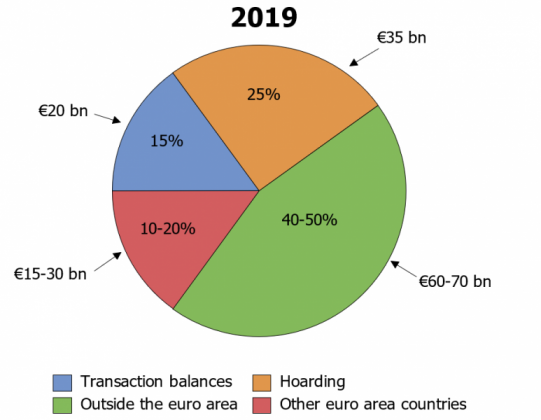References
Ashworth, J. & C.A.E. Goodhart (2021), The great covid cash surge – Digitalisation hasn’t dented cash’s safe haven role, CEPR Discussion Paper DP16618, October.
Caldara, D. & M. Iacoviello (2019), Measuring geopolitical risk, Board of Governors of the Federal Reserve System, International Finance Discussion Papers, December.
Deutsche Bundesbank (2009), The development and determinants of euro currency in circulation in Germany, Monthly Report, June, 49-62.
Deutsche Bundesbank (2018), The demand for Euro banknotes at the Bundesbank. Monthly Report March 2018, 37-51.
Politronacci, E., E. Ninlias, E. Palazzeschi & G. Torre (2017), The demand for cash in France: review of evidence, in: Deutsche Bundesbank (ed.), War on cash: Is there a future for cash?. International Cash Conference 2017, conference volume, Frankfurt, 92-146.
Rösl, G. & F. Seitz (2022), Cash demand in times of crisis, Journal of Payments Strategy & Systems, Vol. 16(2), 107-119.
Seitz, F., L. Devigne & R. de Pastor (2022), Different motives for holding cash in France: An analysis of the net cash issues of the Banque de France. Banque de France, Working Paper Series No. 888.
Sèze, N. de, A. Marchand & R. Bardy (2011), French overseas territories and the euro, Banque de France, Quarterly Selection of Articles, No. 24, Winter 2011-2012, 101-124.
Zamora-Pérez, A. (2021), The paradox of banknotes: Understanding the demand for cash beyond transactional use, European Central Bank, Economic Bulletin 2/2021, 121-137.






